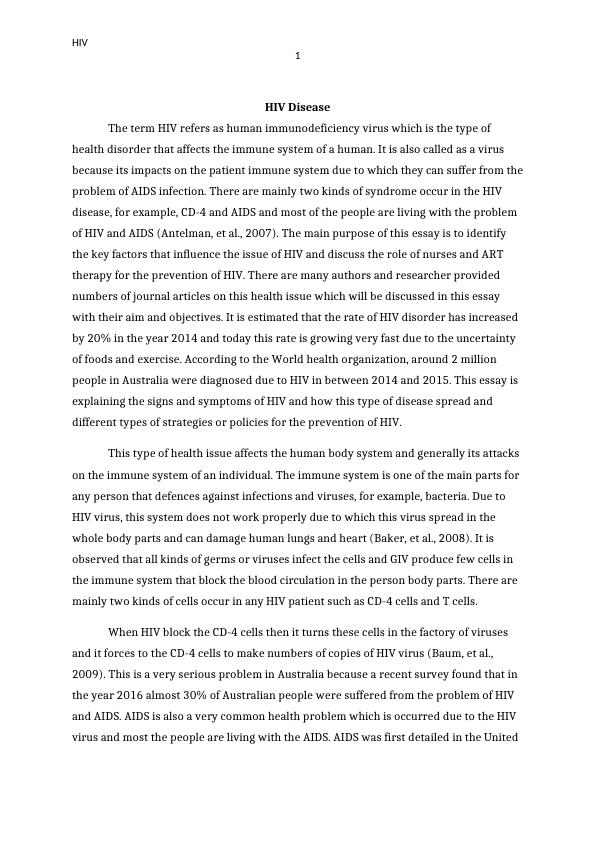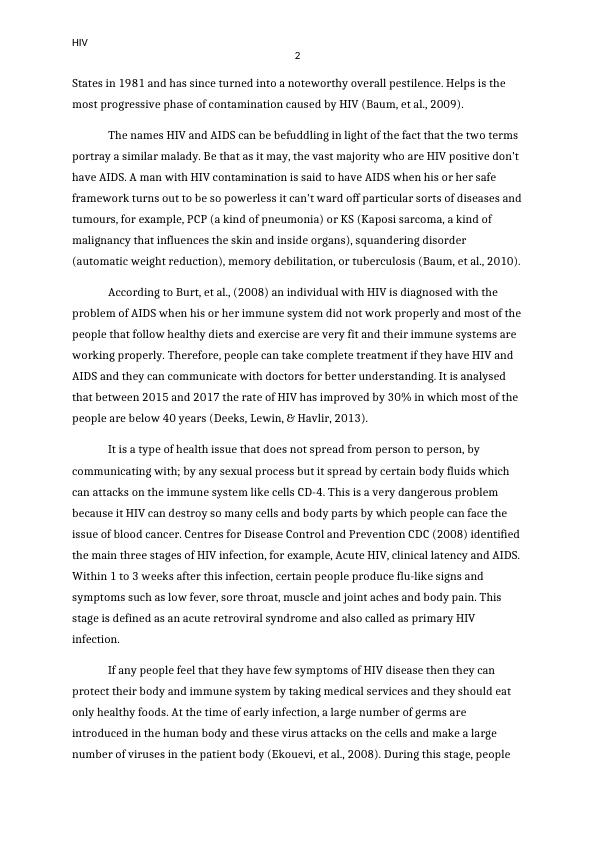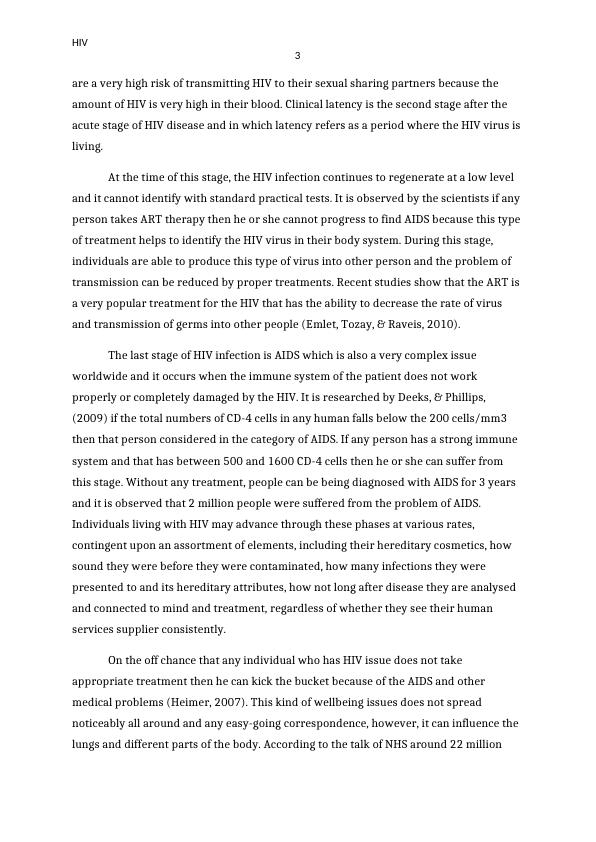Understanding HIV Disease: Key Factors, Prevention Strategies, and Role of Nurses and ART Therapy
Write a critical review of the literature on one emerging or re-emerging communicable disease threat, including the role of agent, host and environmental factors, and potential policy responses.
13 Pages4474 Words291 Views
Added on 2023-06-03
About This Document
This essay discusses the key factors that influence the issue of HIV, the role of nurses and ART therapy for prevention, and different strategies for HIV prevention. It also explains the signs and symptoms of HIV, how it spreads, and the different stages of HIV infection.
Understanding HIV Disease: Key Factors, Prevention Strategies, and Role of Nurses and ART Therapy
Write a critical review of the literature on one emerging or re-emerging communicable disease threat, including the role of agent, host and environmental factors, and potential policy responses.
Added on 2023-06-03
ShareRelated Documents
End of preview
Want to access all the pages? Upload your documents or become a member.
Understanding HIV Disease: Causes, Symptoms, and Prevention Strategies
|11
|4434
|289
Impact of HIV on Human Body
|8
|1829
|27
Communicable Diseases: Causes, Symptoms, Complications, and Management
|10
|2184
|311
The Threat of Communicable Disease- HIV
|12
|4461
|316
HIV and AIDS: Definition, Causes, Symptoms, and Prevention
|8
|2173
|44
Essay on HIV and Hepatitis: Effects, Care, and Management
|27
|8712
|266




